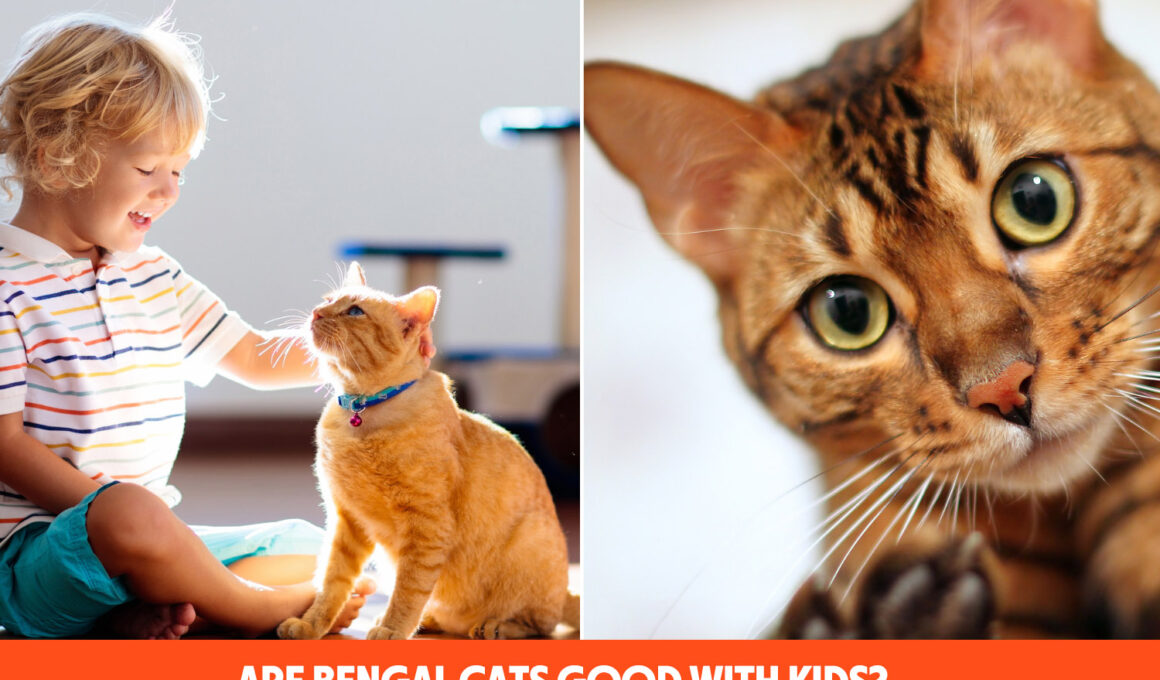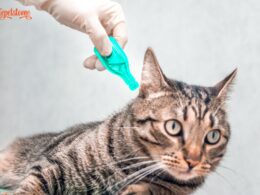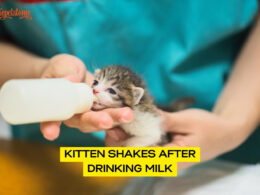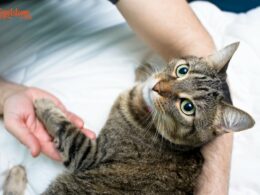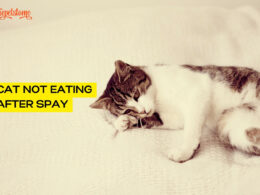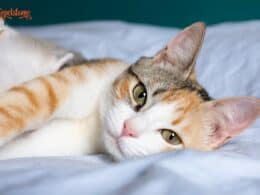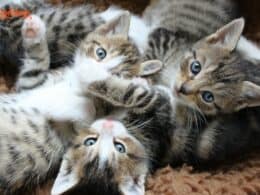Table of Contents Show
Pets and kids are two things that go hand in hand. If you do not already have a pet in your home, chances are that your kids are disturbing you for one already. The problem many people have is deciding which pet is suitable for their kids.
The Bengal cat is a unique and beautiful breed that has become increasingly popular. With their exotic markings, inquisitive nature, and playful personality, it’s not difficult to see why so many people love them.
If your children have seen one before, they may be more specific about wanting a Bengal cat as a pet. However, One of the most important considerations is whether or not they are good with kids; If this is one of your worries, this article has been put together to answer all your questions.
Yes, Bengal cats are good with kids. They can make great family pets, especially if they’re adequately trained and socialized from a young age. They have notable personalities, are warm and affectionate, and enjoy spending time with children. However, they may not be a good fit for infants and smaller children.
Bengals are known for their unique spotted or marbled coats, which can come in various colors and patterns. If your kids request a Bengal, you should get one. Bengal cats are known for their affectionate nature and typically enjoy spending time with children.
In this article, you will find out all there is to know about whether Bengal cats are great pets around children. Stick around.
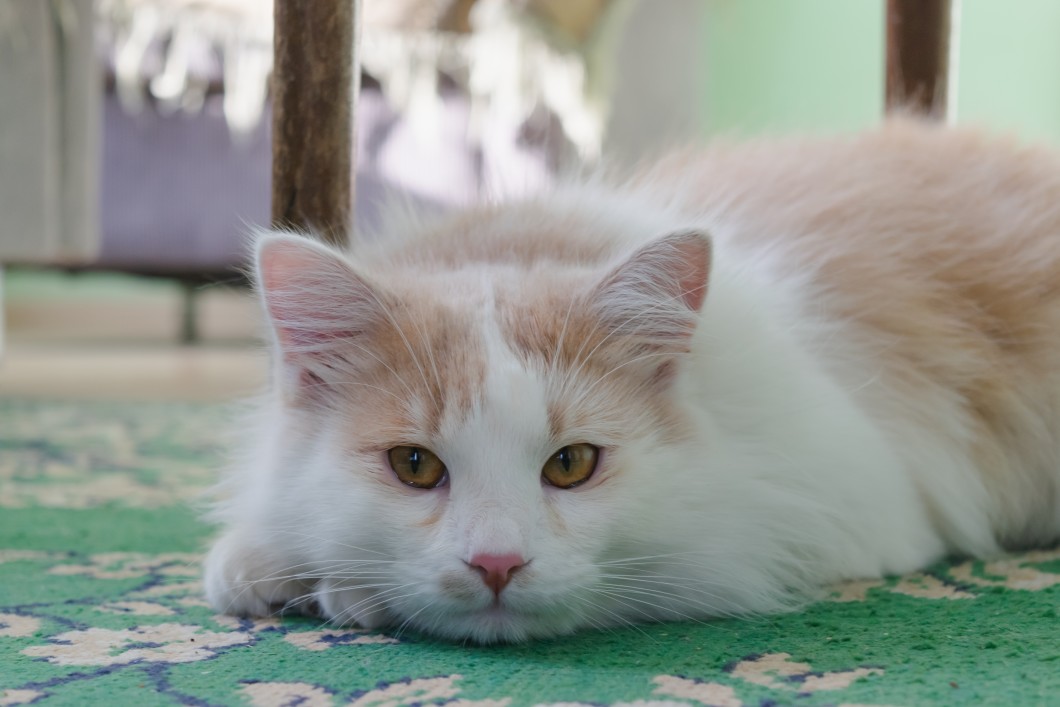
Are Kids Safe Around Bengal Cats?
Many Bengal owners report that their cats actively seek attention and interaction from kids. However, we do not recommend getting Bengal for younger kids and infants. Bengals are very active and playful, and their high energy levels can sometimes be overwhelming for small children.
Additionally, Bengals tend to be quite vocal, and their constant meowing can irritate young kids. Also, younger kids may not understand boundaries with their cats and may want to pull them in every direction or even play dress-up with them.
This can upset the Bengal cat. While every cat is unique and may have different preferences for how many contacts they enjoy, Bengals generally do well with kids who respect their personal space and limits.
Another thing to have in mind is that grooming routines shouldn’t be done by kids as cats tend to bite when trimming their nails, and your kid might end up getting hurt.
There is no end to researching the Bengal cat. Proper research will give you useful information that you need to know about your cat and how to treat it right. The following is what you need to know about getting a Bengal cat.
- Bengals are chatty cats and love to communicate with their humans. You must be ready to engage in regular conversations with your cat.
- Bengals are high-energy cats that require a lot of stimulation and exercise. A bored Bengal is often destructive and can be difficult to live with. If you’re not prepared to provide enough space and enrichment for your Bengal, he may not be the right cat for you.
- Bengals can be very vocal cats. Hence, they may growl loudly and scare your younger kids.
- Bengals are intelligent, active cats that need plenty of mental stimulation. If you’re not prepared to provide your Bengal with ample opportunity to play and explore, he may become frustrated and destructive.
- Bengal cats can be very independent and may not appreciate being constantly patted and played with by small children
- Bengals are notoriously difficult to litter train. If you’re not prepared to put in the time and effort to litter train your Bengal, he may not be the right cat for you.
How To Ensure A Good Relationship Between Your Kids and Bengal Cats
Bengal cats make great companions for kids. They are playful and loving, and can be easily trained to do tricks. The following are tips for having a good relationship between your cats and your kids;
- Make available enough toys and adequate playtime for your Bengal cats. Bengals love to play and will appreciate having lots of toys to keep them entertained.
- Be sure to introduce your Bengal cat to your children gradually. Allow them to get used to each other’s smells and sounds before allowing them to interact too much.
- Ensure your children know how to pet and hold a Bengal cat properly. Show them how to support the cat’s back and head so they don’t get hurt.
- Keep your Bengal’s claws trimmed. This will help prevent accidental scratches from happening during playtime.
How to Prepare For A Bengal Cat
Have you decided to get a Bengal cat? Great. We helped with how you should prepare for a Bengal cat. They are below;
- First, research the breed. Bengals are active and curious by nature, so they need an owner who can keep up with them. They also have a lot of energy, so be prepared for playtime.
- Secondly, get your home ready. Bengals like to climb, so make sure you have plenty of places for them to perch. We also recommend childproofing your home before their arrival.
- You’ll also want to create a scratching post for them to scratch on instead of your furniture.
- Finally, introduce your Bengal cat to your family and other pets slowly and carefully. Supervise all interactions until you’re confident that everyone is comfortable with each other.
How to Train and Groom Your Bengal Cat
Having decided to get a Bengal cat, you must train and groom them. Below are tips on how to do that.
- Bengals also love to climb, so consider getting a cat tree or other climbing structure.
- Bengal cats have high energy. Hence they require a lot of opportunities for physical and mental work. You must provide them with opportunities to run, jump, play, and do mental exercises.
- To keep your Bengal coat looking its best, brush it regularly with a soft-bristled brush. Bengals typically shed less than other breeds of cats, but they do shed more during the spring and fall.
- Bengals are intelligent and can be trained to do tricks, walk on a leash, and even use the toilet.
Common Health Challenges Bengal Cats To Face
Bengal cats, like other animals, may have some health challenges from time to time. You must be aware of them and know how to tackle them before you bring them into the house. With proper care and attention, your Bengal cat will be a healthy and happy part of your family for many years to come they are as follow;
1. Hairballs
Bengal cats have very dense fur coats that can lead to hairballs. Be sure to groom your Bengals regularly and help them stay healthy.
2. Liver Disease
Bengals are also susceptible to liver disease, so it’s important to keep an eye on their liver enzymes and take them for regular vet checkups.
3. Eye Problems
Because of their unique markings, Bengal cats can be prone to eye problems. Be sure to take them to the vet for regular checkups and check for any changes in their eyesight.
Do Bengal Cats Make Good House Pets?
Bengal cats are known for their intelligence, playfulness, and affectionate nature, making them ideal house pets. They are also relatively low maintenance and do not require much grooming. However, Bengal cats can be very active and require more attention than other cat breeds.
Bengal cats are good with kids. However, their playful and active nature may disqualify them from being suitable for smaller children.
If you intend to get a Bengal cat for your children, ensure you make preparations for the cats in your home and also make the necessary research. Overall, Bengal cats have good personalities and will be good companions for your kids.





